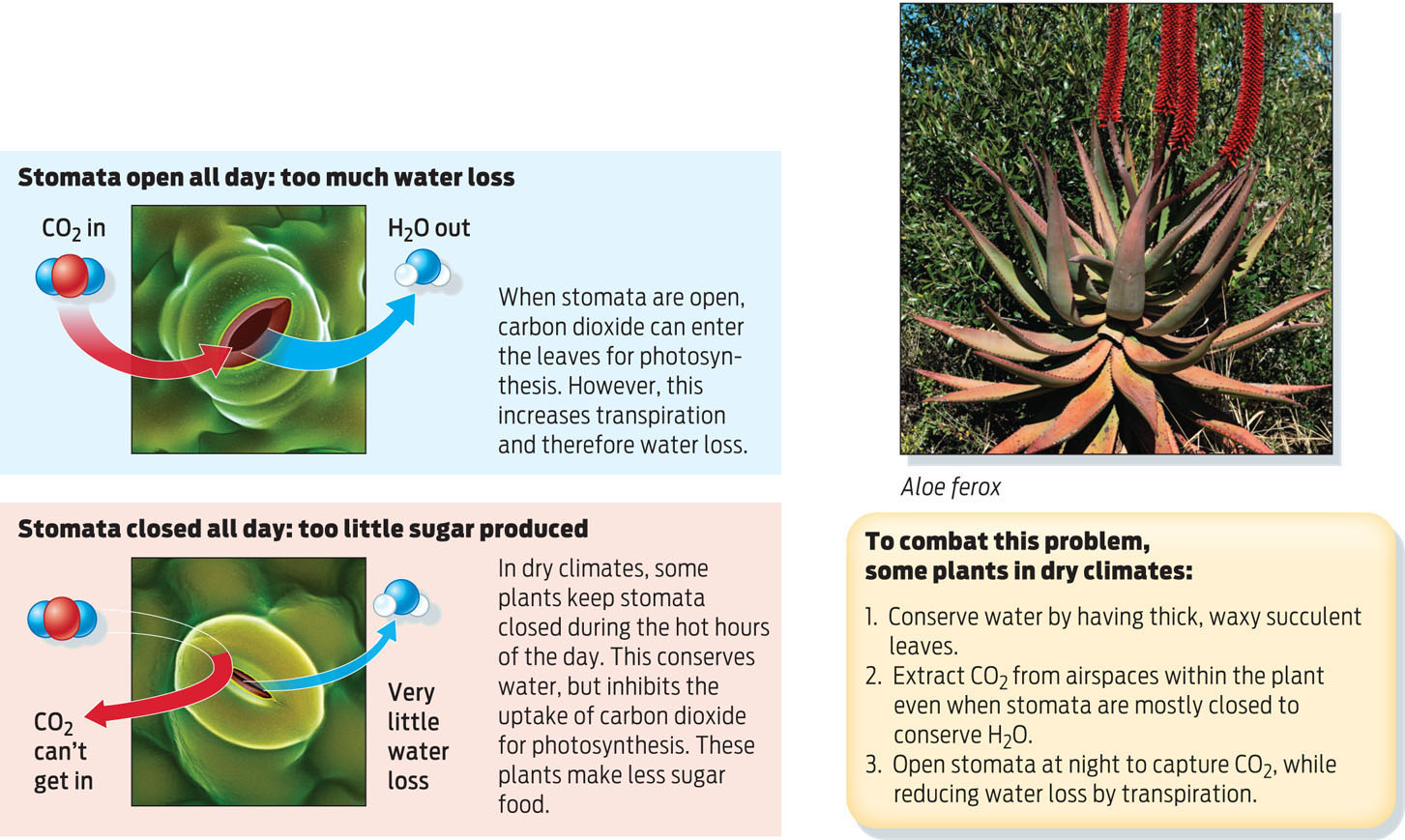 Can plants photo-synthesize at night?
Can plants photo-synthesize at night?
ANSWER: By definition, there is a crucial part of photosynthesis that can occur only during daylight hours—the light-absorbing “photo” part. So technically, the answer is, no—plants can’t photosynthesize at night. However, some plants are still hard at work at night, especially those living in hot, dry climates.
Because daylight hours tend to be the time when it’s hottest and driest, plants lose a lot of water during the day. To conserve water, plants can close their stomata. But closing stomata also prevents carbon dioxide—the raw material of photosynthesis—from entering the leaf. In many plants, wheat and rice, for example, the result of this trade-off is reduced output of plant food—sugar.
Some plants have adapted to sun-scorched surroundings. Corn and sugar cane, for example, are able to thrive in hot, sunny climates by keeping their stomata closed as much as possible. They use a molecule called PEP carboxylase to capture CO2 even when it is present only at low concentrations in air pockets in the leaf when the stomata are closed. Once the CO2 has been captured, it can be “fed” into the synthesis part of photosynthesis to generate the sugar that the plants rely on.
Still other plants have adapted to hot, dry conditions by splitting up two parts of photosynthesis that usually occur together: taking in CO2 and making sugar. Pineapples as well as cacti and other succulent plants—juicy aloe and jade plants, for instance—conserve water by keeping their stomata closed during the day when it’s hot. But at night, when it’s cooler, they open their stomata, allowing carbon dioxide in. The CO2 that is captured at night isn’t used right away but instead is stored. During the day, these plants can leave their stomata closed and use the stored CO2 to complete photosynthesis and make sugar. By separating in time the steps of photosynthesis, these well-adapted plants can thrive in conditions that would wither their less physiologically adapted cousins (INFOGRAPHIC 32.4).
All plants must perform the “photo” reactions of photosynthesis during the day. But many plants experience reduced levels of photosynthesis in hot and dry conditions. Other plants are adapted to live in hot and dry climates, and have different strategies to take in CO2 while minimizing water loss.

Like other eukaryotic organisms, plants use sugar to perform aerobic respiration to make ATP (see Chapter 6). All plants respire both during the day and at night. Because the total amount of carbon dioxide given off by plants during cellular respiration is less than the total amount taken in for photosynthesis, plants are carbon dioxide sinks that ultimately lower the amount of carbon dioxide in the atmosphere.